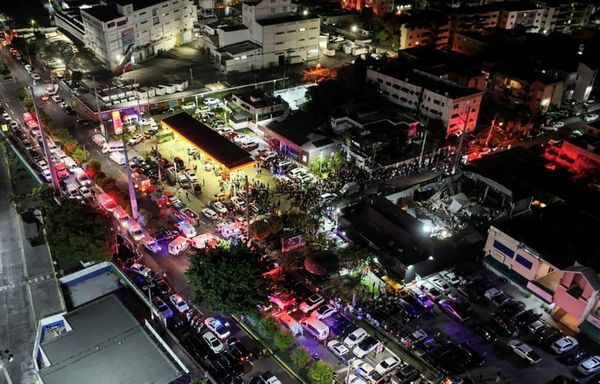As difficult as it is to gain any real insight into a player after just 171 plate appearances, it was obvious when watching Oswaldo Cabrera last season that the kid had it.
His maturity far beyond his years allowed the 23-year-old to remain mostly unfazed when he joined the Yankees during August, by far their worst and most tumultuous month of the regular season. When Cabrera debuted on Aug. 17, the team had lost three in a row, 12 of its last 15, and had swung the door open in the American League East, where its lead would eventually be whittled down to just 3.5 games before a September surge.
At the time of his call-up, the sky was falling on everything but Cabrera. He smacked ten hits in his first nine games — during which he started at second base, third base, shortstop and right field — and provided a jolt that was badly needed, even if the winning didn’t follow right away. When it was all said and done, the utility man batted .247/.312/.429 (.740 OPS) with a 111 wRC+ and 15 extra base hits in 44 games, six of which were home runs.
With an immediate impact on both sides of the ball, Cabrera finished his rookie season with 1.5 Wins Above Replacement, per FanGraphs. That’s more than the figures put up by Giancarlo Stanton and Isiah Kiner-Falefa and more than the combined total from Joey Gallo, Marwin Gonzalez and Tim Locastro, adding even more retroactive fuel to the discussion about why they didn’t bring Cabrera up from the minor leagues sooner.
A start as strong as Cabrera’s can hardly be spun as a bad thing, but it has put him and the Yankees in an interesting position heading into 2023. Had Cabrera fallen flat on his face, it seems more likely that the team would have pursued an outside addition to play left field. But Cabrera’s quick grasp of major league pitching (before a 2-for-28 showing in the playoffs, at least) has clearly instilled confidence in his front office, whose inactivity on the outfield market signals a confidence in the young Venezuelan.
To refresh your memory, the Yankees passed on an Andrew Benintendi reunion, never executed the hypothetical Bryan Reynolds trade that dominated so much of the offseason discourse, and chose not to make a serious play for left-handed hitting free agent outfielders Brandon Nimmo, Joc Pederson and/or Michael Conforto. They’ve also dragged their feet on any late-offseason moves, letting perfectly helpful potential starting left fielders like Jurickson Profar and David Peralta sit there without a contract. The message is far from cryptic. The Yankees like what they have in house and are prepared to see what Cabrera can give them over a full season, or at least however many at-bats they feel he deserves in a partial left field timeshare with Aaron Hicks.
As such, the Yankees are looking at Cabrera, Jose Trevino and either Kiner-Falefa or Oswald Peraza making up the bottom of the order. That’s two players who are still aging out of their MLB training wheels and a career backup catcher who had a dreadful .264 on-base percentage from Aug. 1 to the end of the year. If Josh Donaldson is still getting a full workload, that’s four of the nine players in the starting lineup who could be considered question marks offensively, and that’s without even mentioning Harrison Bader, whose bat came alive in the playoffs but has made his bones as a defender for his entire career.
The Yankees had no problem generating runs last season — they were at or near the top of the American League leaderboard in nearly every important offensive category — but that was with Aaron Judge having a season that, realistically speaking, will be impossible to duplicate. Forming a deeper lineup was a clear need for the team heading into the offseason, and to this point the Yankees have not given a major league contract to any position player who didn’t play for them last year. It’s essentially the same group of hitters they trotted out last year but with Bader and the kids (Cabrera and Peraza) replacing Gallo, Gonzalez and Matt Carpenter. That is certainly not a guarantee for improvement given how impactful Carpenter was.
Manager Aaron Boone finds himself in a difficult spot. He will either be starting a left fielder who’s actually a natural infielder and has played exactly 100 games above Double-A in his whole life, or a veteran coming off a postseason injury who posted the third-lowest slugging percentage of any outfielder in 2022 (min. 450 plate appearances).
The best case scenario is Cabrera applying a gorilla grip to the position, enduring very few growing pains in the batter’s box or in the outfield, and using an eyebrow-raising spring training performance to turn all of this potential energy into kinetic energy. But that’s a big ask for someone as young and inexperienced as Cabrera, especially for someone whose home games are played in the pressure cooker at 161st St and River Ave.
When he was thrown into that environment for the first time last season, he espoused a simplistic mindset.
“Just play my game,” Cabrera said of his mental approach to being a big leaguer. “Don’t do more than I can.”
Unfortunately, for reasons that are beyond his control and could have been patched up with a cost-effective deal for a proven left fielder, Cabrera may in fact be asked to do a little more than he can this season. Only time will tell if he’s up to the challenge, but the switch hitter born in 1999 will factor heavily in the Yankees’ 2023 success.
Whether he should be in that position at all is a question for the higher ups, but their answer with less than three weeks until the first Grapefruit League game is to let the uninitiated Cabrera give this a go and hope he plays like someone who’s been here before.







